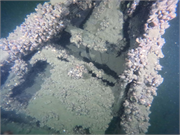Wildlife
White throated sparrow takes first place in fattest bird competition
|
By Clara Lincolnhol
A very round white throated sparrow is the heavyweight champion of the 2025 Wisconsin Fat Bird Week contest. The bird, coined the “spherical white-throated sparrow,” won by a landslide, receiving 72% of the vote in the final round against its nearest competitor, a “rotund ruby-throated hummingbird.”









